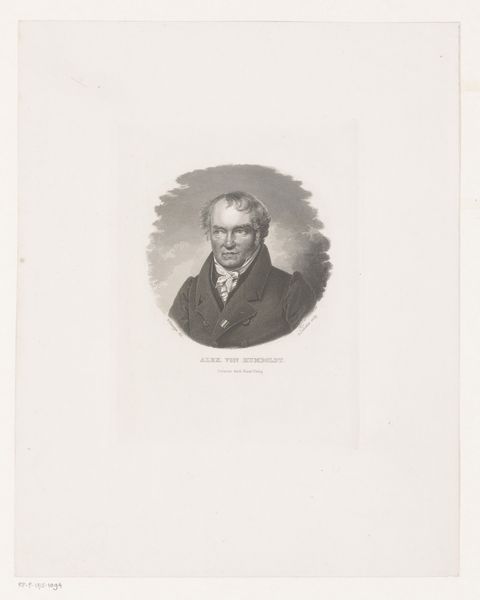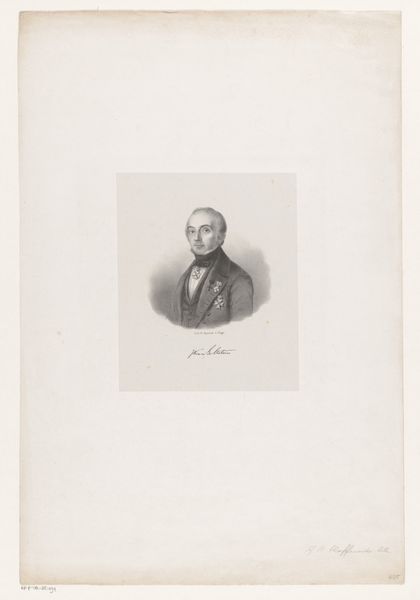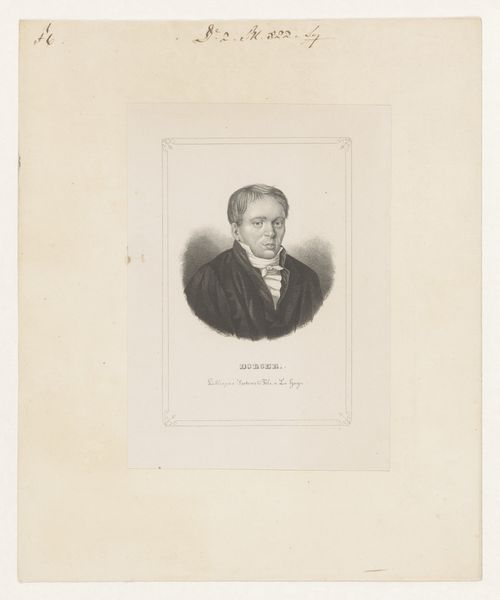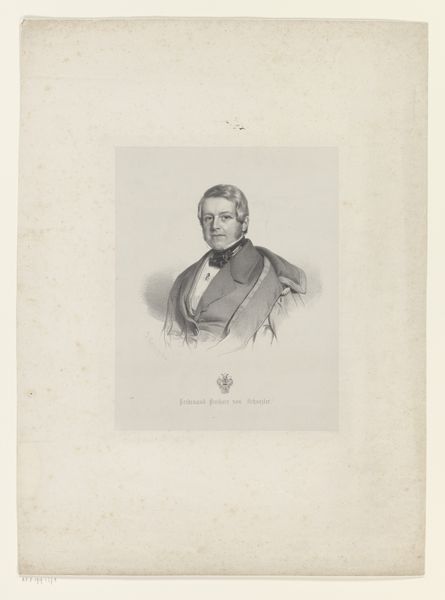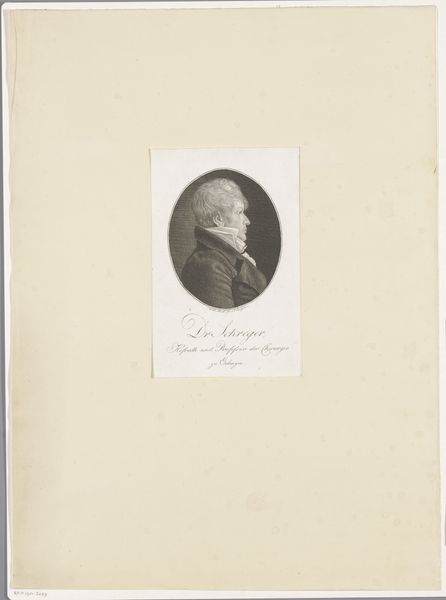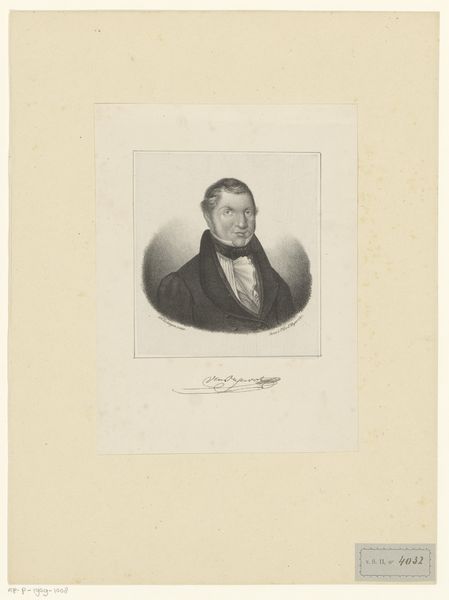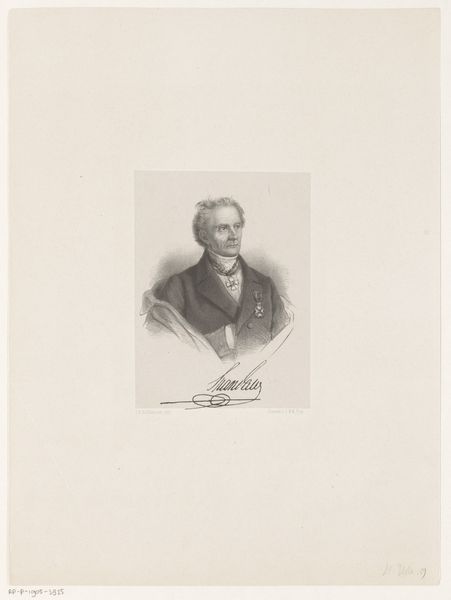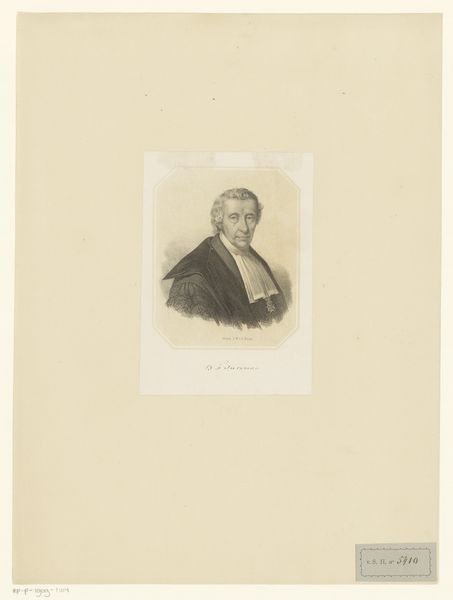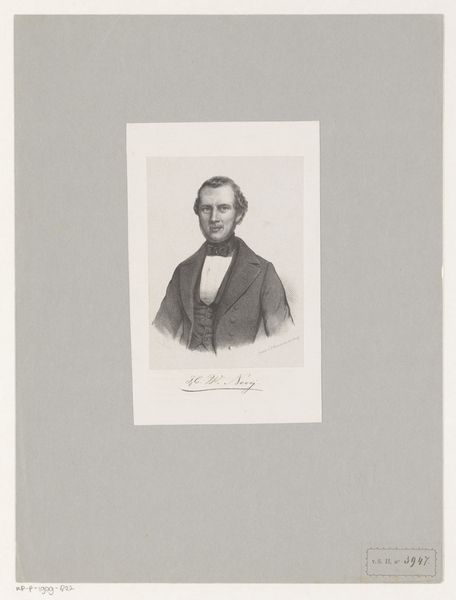
drawing, print, engraving
#
portrait
#
drawing
# print
#
academic-art
#
engraving
#
realism
Dimensions: height 370 mm, width 265 mm
Copyright: Rijks Museum: Open Domain
Curator: The work before us is a portrait of Herman Johan Royaards. It’s an engraving made by Desguerrois & Co., placing its creation somewhere between Royaards’s life years of 1827 and 1907. Editor: My first impression is of someone formidable. The tight composition centers him, while the monochrome and fine lines amplify a sense of reserved authority. Curator: Absolutely. Royaards held significant public roles, likely within academic or religious circles given his attire and the context of portraiture during this era. Prints such as this would have served to disseminate his image widely, reinforcing his status. Editor: Note the Order of the Netherlands Lion he wears. This imagery speaks volumes about societal values and how worth was visually communicated and legitimized during this period. He isn’t simply a man; he’s an embodiment of civic duty and accomplishment. Curator: The engravers, Desguerrois & Co., were a commercial enterprise, keen to cater to demand. Their realism likely ensured the print's appeal to the sensibilities of the rising middle class and its taste for accurately captured likenesses. This contrasts, say, with older, more idealized forms of portraiture. Editor: Observe the almost photorealistic approach in the fine lines suggesting wrinkles, and conveying textures like the velvety robe or silky jabot. Even the signature seems more of an authentication than an artistic flourish. It mirrors the intent, which wasn’t necessarily artistic self-expression but cultural preservation. Curator: And dissemination, don't forget! Reproduction meant more than memory—it was about constructing and perpetuating ideals of leadership, intellect, and belonging. A printed image gains symbolic importance just through that circulation, influencing wider perceptions and narratives. Editor: It definitely gives food for thought how this kind of commissioned portrait actively participated in image making and cultural memory. It prompts us to recognize that the portrait signifies less an individual likeness than cultural aspirations. Curator: Precisely. Investigating portraiture through that socio-historical framework enriches its value significantly beyond simple aesthetics or biographical detail. Editor: It is fascinating to unravel these layered images. Every symbol invites the question, and there is so much you can unravel.
Comments
No comments
Be the first to comment and join the conversation on the ultimate creative platform.

